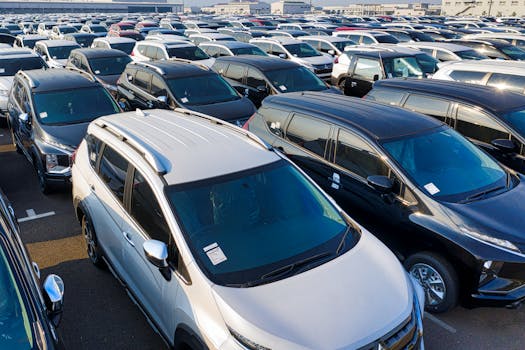
**
Southeast Asia's vibrant metals industry is facing increasing headwinds as the global economy grapples with the lingering effects of tariffs and a slowdown in key markets, according to a new Coface Risk Review. The report highlights a confluence of factors that are elevating risk levels for businesses involved in the production, processing, and export of metals across the region, from the Philippines to Vietnam. This includes rising input costs, weakening demand, and geopolitical instability. This situation underscores the need for businesses to adopt proactive risk management strategies to navigate these challenging times.
Rising Protectionism and the Impact on Southeast Asian Metals
The report emphasizes the detrimental effects of escalating global trade tensions, particularly the ongoing impact of tariffs imposed by major economies. These protectionist measures have disrupted established supply chains, limited market access for Southeast Asian metal producers, and contributed to a decline in export volumes. Countries heavily reliant on metal exports, such as Malaysia, Indonesia, and Thailand, are experiencing significant pressure on their economies. The reduced demand from key markets like the US and Europe, coupled with increased competition from other metal-producing regions, creates a challenging landscape for Southeast Asian businesses.
Key Challenges Facing the Metals Industry in Southeast Asia:
- Increased Input Costs: The cost of raw materials, energy, and transportation has risen sharply in recent months, squeezing profit margins for metal producers. This is particularly problematic for smaller companies lacking the financial resources to absorb these increased costs.
- Weakening Global Demand: The global economic slowdown is dampening demand for metals across various sectors, including construction, manufacturing, and automotive. This decrease in demand directly affects export-oriented businesses in Southeast Asia.
- Geopolitical Uncertainty: Political instability in several regions, coupled with the ongoing war in Ukraine, has created uncertainty in the global market, impacting the prices and availability of key metals. This adds another layer of complexity for businesses to navigate.
- Supply Chain Disruptions: Tariffs and other protectionist measures have disrupted established supply chains, forcing businesses to find alternative suppliers and routes, increasing costs and logistical challenges.
- Currency Fluctuations: Fluctuations in regional currencies against the US dollar and other major currencies can significantly impact the profitability of metal exporters in Southeast Asia.
Specific Impacts Across Southeast Asian Nations
The Coface Risk Review delves into the specific challenges faced by individual countries within the region:
Indonesia: Nickel and Beyond
Indonesia, a major nickel producer, is facing both opportunities and challenges. While the global demand for nickel, crucial for electric vehicle batteries, presents a growth opportunity, the country still grapples with infrastructure limitations and the need to attract further foreign investment to fully capitalize on this trend. The ongoing price volatility of nickel adds to the existing challenges.
Malaysia: Steel and Diversification
Malaysia's steel industry is feeling the pinch from reduced global demand and heightened competition. The country is actively seeking to diversify its economy and reduce reliance on specific industries, but this process takes time and significant investment. This diversification may include exploration of new materials and technologies.
Thailand: Aluminum and Automotive
Thailand's aluminum industry, closely tied to its automotive sector, is susceptible to fluctuations in global car production. The shift toward electric vehicles could present both opportunities and risks. While demand for aluminum in electric vehicle batteries is growing, the industry must adapt to the changing requirements of this emerging market.
Vietnam: Growth and Vulnerability
Vietnam's rapid economic growth has fueled demand for metals, but it remains vulnerable to external shocks. The country's integration into global supply chains exposes it to the risks associated with protectionist measures and global economic slowdowns.
Navigating the Risks: Strategies for Southeast Asian Metals Businesses
The report emphasizes the need for proactive risk management to mitigate the growing challenges. Key strategies include:
- Diversification of Markets and Products: Reducing reliance on single markets or products can cushion the impact of external shocks. Businesses should actively explore new markets and develop new product lines to spread their risk.
- Strengthening Supply Chain Resilience: Building resilient and diversified supply chains that are less vulnerable to disruptions is crucial. This can involve sourcing materials from multiple suppliers and exploring alternative transportation routes.
- Improving Operational Efficiency: Optimizing production processes and enhancing operational efficiency can help businesses remain competitive even in a challenging market environment. This includes investing in technology and automation.
- Investing in Technology and Innovation: Embracing technological advancements and investing in research and development can help businesses develop new products and processes to maintain their competitive edge.
- Robust Risk Management Frameworks: Businesses need to develop comprehensive risk management frameworks that identify, assess, and mitigate potential threats. This involves regular risk assessments, contingency planning, and insurance coverage.
Conclusion: Adapting to a Changing Landscape
The Southeast Asian metals industry is at a critical juncture. The confluence of global tariff wars, economic slowdown, and geopolitical uncertainty poses significant challenges. However, by adopting proactive risk management strategies, diversifying their operations, and embracing innovation, businesses in the region can navigate these challenges and maintain their competitiveness in the long term. The future success of the industry will depend on its ability to adapt to a rapidly changing global landscape. Continued monitoring of market trends, geopolitical events, and government policies will be paramount for survival and growth.




















